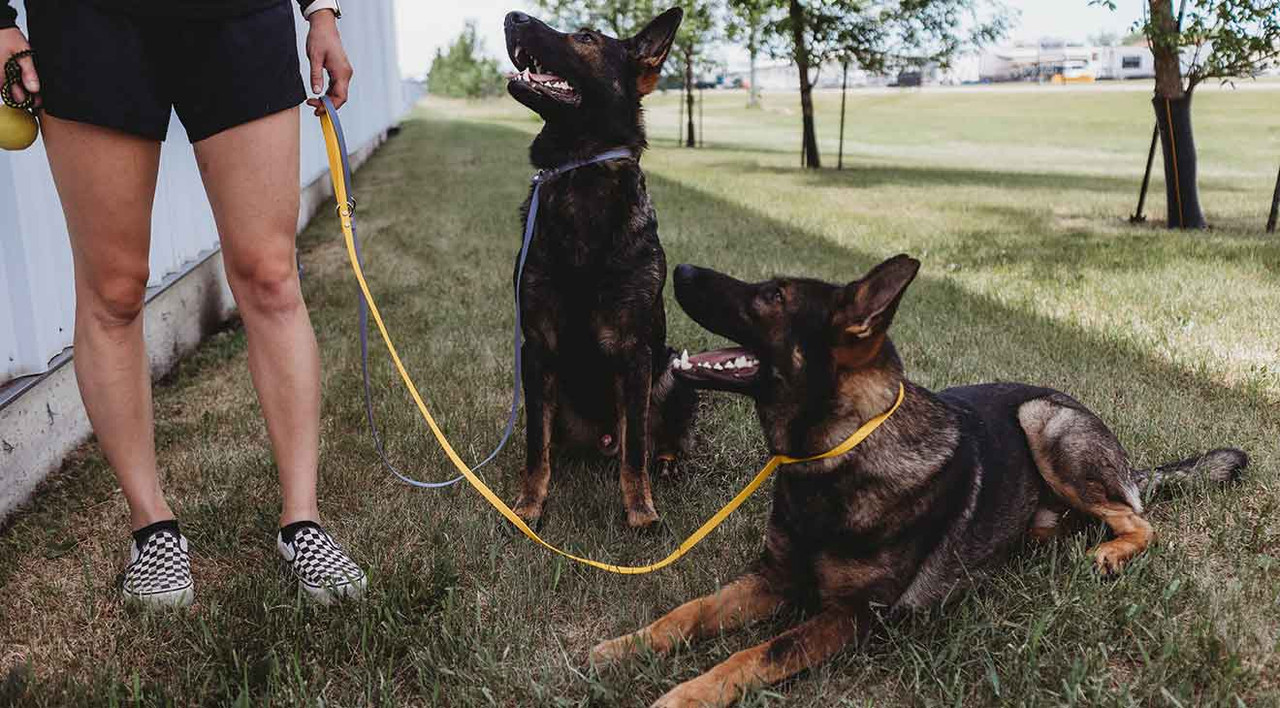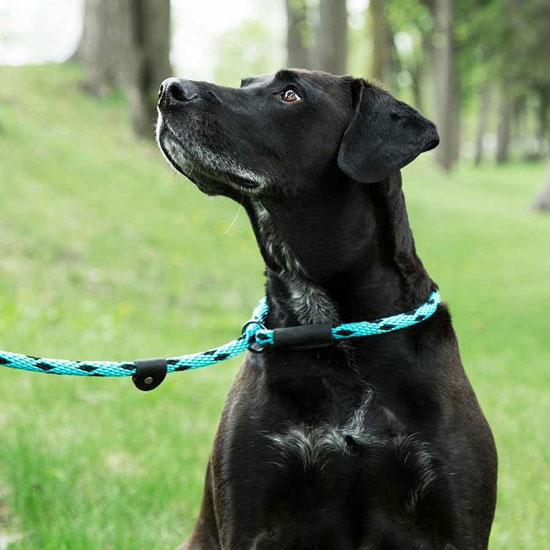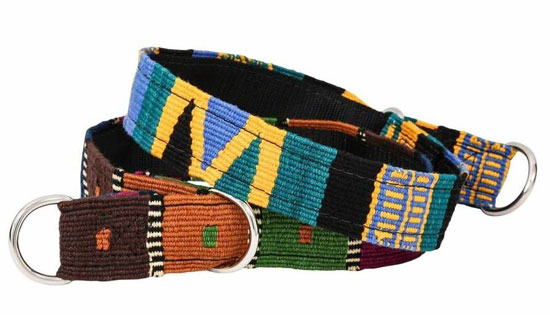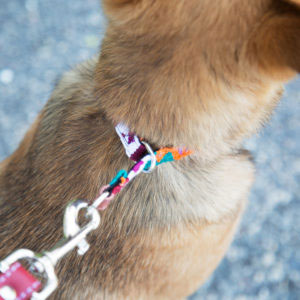Slip Leads & Slip Collars for Dogs

As the name suggests, slip leads and collars simply slip over your dog’s neck. They are excellent training tools to help your dog learn to behave while walking on a leash.
Slip collars don’t have a traditional buckle closure. They are designed as a loop. One end of the collar is strung through the ring on the other end. The leash of your choice can then be easily attached. If you’re using a slip lead, the collar and leash are combined, so no extra lead is required. With both a slip collar and lead, all it takes to correct your dog’s behavior is a slight tug of the leash. The slip collar will tighten, applying pressure to the dog's neck as he or she tries to pull or strain against the leash. It allows for a method of aversion training designed to teach the dog that his or her behavior is not acceptable.
How to Use
Thanks to their similar design, the process for outfitting your dog with a slip lead or collar is the same. Slip the collar over your dog’s head and position the ring at the back – scruff – of their neck.
If you’re using a slip collar, the leash will connect to the empty ring. You can choose any type of lead that works for you and your dog. In fact, you may choose a leash that discourages pulling, as well.
The collar should be loose and comfortable when your dog is at rest. Ensure that you've chosen a slip lead or collar that's comfortable for your dog. Softer materials, such as nylon or silicone, are safer options than leather or other materials that don't have any cushion or give. You can find soft fleece slip collars, as well.
When your dog pulls on the leash, the collar will tighten. You should then give a quick, firm tug sideways on the leash and immediately release. Do not continue pulling.
When your dog corrects their behavior, the collar will loosen again. A slip collar should apply pressure. It should not choke your dog, nor should it compress his or her airway.
Why Slip Leads & Collars are Effective
The pressure from the slip lead or collar becoming more snug makes the dog uncomfortable but doesn’t cause any harm. This pressure discourages the dog from pulling on the leash. With enough consistent training, your dog will learn to walk calmly beside you.
Slip collars and leads are quick, effective, and comfortable devices for training and everyday casual use.

Types of Slip Collars & Leads
Slip collars & leads can be found in many different materials and constructions.
Materials:
- Chain
- Nylon Webbing
- Nylon Rope
- Polypropylene Rope
Construction:
- With a stopper tab (to ensure the collar doesn’t get too loose)
- Without a stopper tab

It's imperative to pick out a material that's right for your pup. As a general rule, avoid slip collars made of nylon, canvas, or softer materials if you have a dog who enjoys chewing or pawing at his or her collar. The same goes for slip leads. Don't give your pooch the opportunity to chew off his or her collar or leash. You might not realize it until your dog breaks free and runs away from you.
If you’re having a ruff time training your pup to walk nicely on a leash, a slip collar or lead may just be the solution you’ve been looking for. With consistent training and regular walks, you can effortlessly teach your dog that pulling or lunging on the leash is bad behavior. Soon enough, taking walks will be a pleasure for both of you. Check out dogIDs' selection of slip leads and slip collars, and learn more about them here.
To learn about other types of collars and how to find the best fit for your dog, read our blog on choosing the right collar.
Explore Popular Articles
-
Homemade Flea, Tick & Mosquito Repellent for Dogs: A Natural Recipe for Pet Parents
Jun 13, 2025Beyond the Buzz and Itch: Protecting Your Pup from Mosquitoes, Fleas, and Ticks As pet parents, we w
-
Can My Dog Eat This? A List of Human Foods Dogs Can and Can't Eat
Jun 04, 2025As loving dog owners, we consider our furry companions members of the family. They share our homes,
-
How Long Are Dogs Pregnant - Tips for Care & Safety
May 15, 2025Congratulations! If you’re reading this, your furry friend is likely expecting a litter of pup





